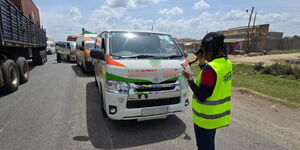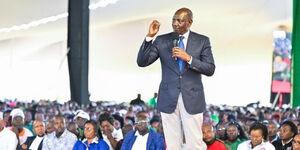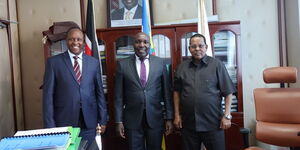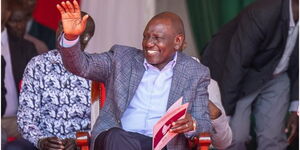The Parliamentary Budget Office in conjunction with Treasury Cabinet Secretary, Prof Njuguna Ndungu, on Friday, November 11, released a report detailing the roadmap to realising the bottom-up economic model.
According to the estimates, the new administration was projected to use Ksh2.67 trillion in President William Ruto's first term in office.
The report further stated that approximately Ksh467 billion will be required to lay the foundation of the Bottom-up model in the first year.
“It is estimated that Ksh2.67 trillion is required to fully implement the manifesto within five years, and approximately Ksh473 billion is required in the first year.
"The plan costing has been undertaken from two perspectives," part of the report read.
Treasury's model is anchored upon the assumption that most projects will be executed through public-private partnership frameworks.
Among the projects selected to be executed through the partnership between the government and the private sector include the housing, energy and water sectors owing to their capital-intensive nature.
"In other instances, such as housing, it was assumed that the central role of the government is to unlock private sector funding and create an enabling environment to enhance demand and uptake of affordable houses," the report added.
Treasury also highlighted key sectors prioritised in the economic model to transform various aspects of the economy.
According to the report, agriculture was identified as a major priority for the Kenya Kwanza government. The framers of the report argued that Ruto's administration was committed to addressing agriculture's challenges, including overreliance on rainfall and low mechanization.
Agriculture expenditures were projected to cost approximately Ksh250 billion in five years.
"The plan contends that agriculture offers an opportunity for a quick turnaround as it grants the shortest payback period on investments while requiring minimal or no new capital investments," read an excerpt of the report.
Other notable sectors in the plan include small micro and medium enterprises, affordable housing and settlement, universal health care and internet connectivity through the 'Digital Superhighway' project.
The commitment to incubate and boost MSMEs is expected to cost Ksh397 billion, while the affordable housing plan was projected to cost the same amount.
Execution of the Universal Healthcare plan is slated to cost Ksh258 billion as the government aims to fulfil Kenyans' rights to access healthcare services.
However, the report stated that the estimations were faced with some limitations, including the fact that not all policy interventions can be costed though they may have indirect financial implications.
Also entrenched in the plan is President Ruto's resolve to slash the Ksh300 billion allocated to recurrent expenditure in the budget.












